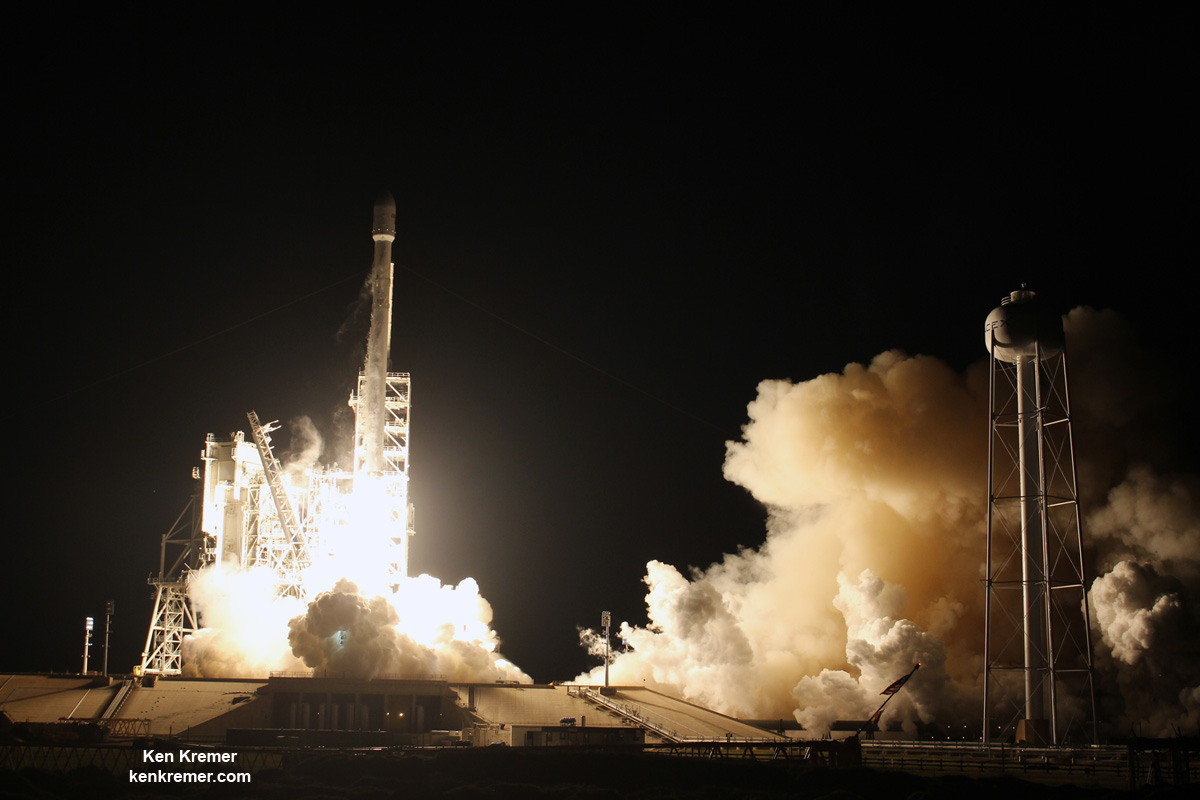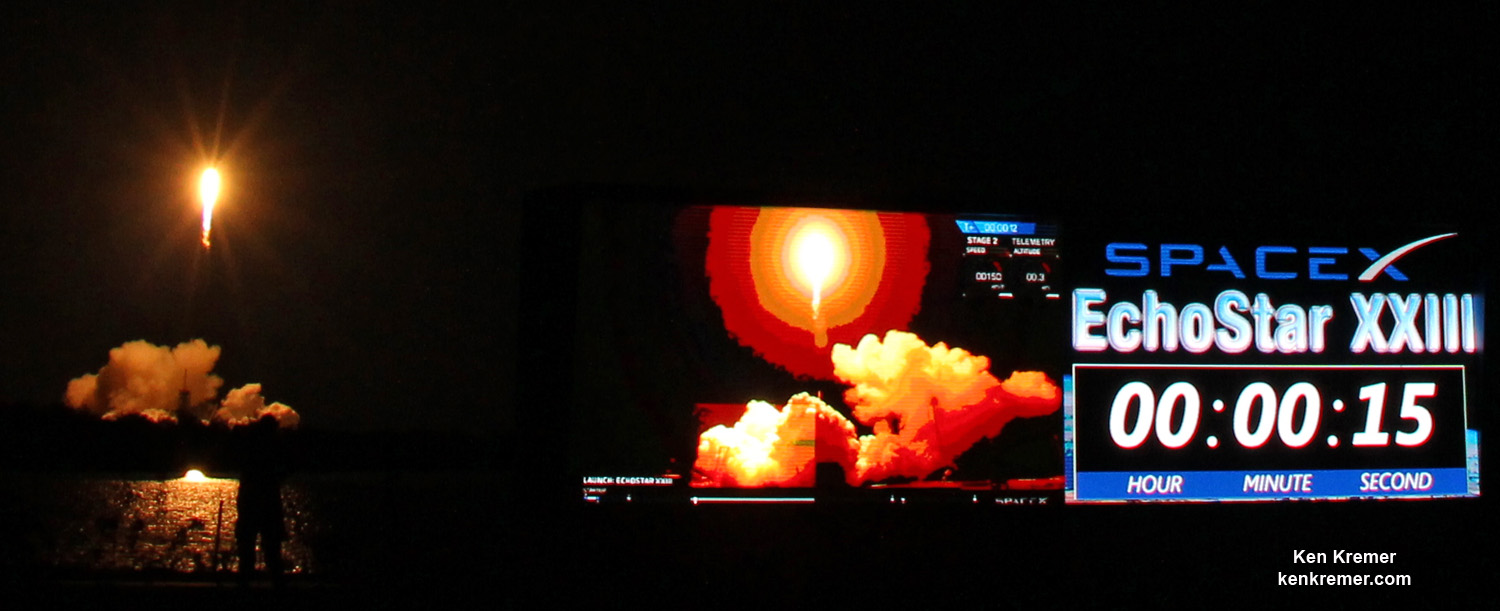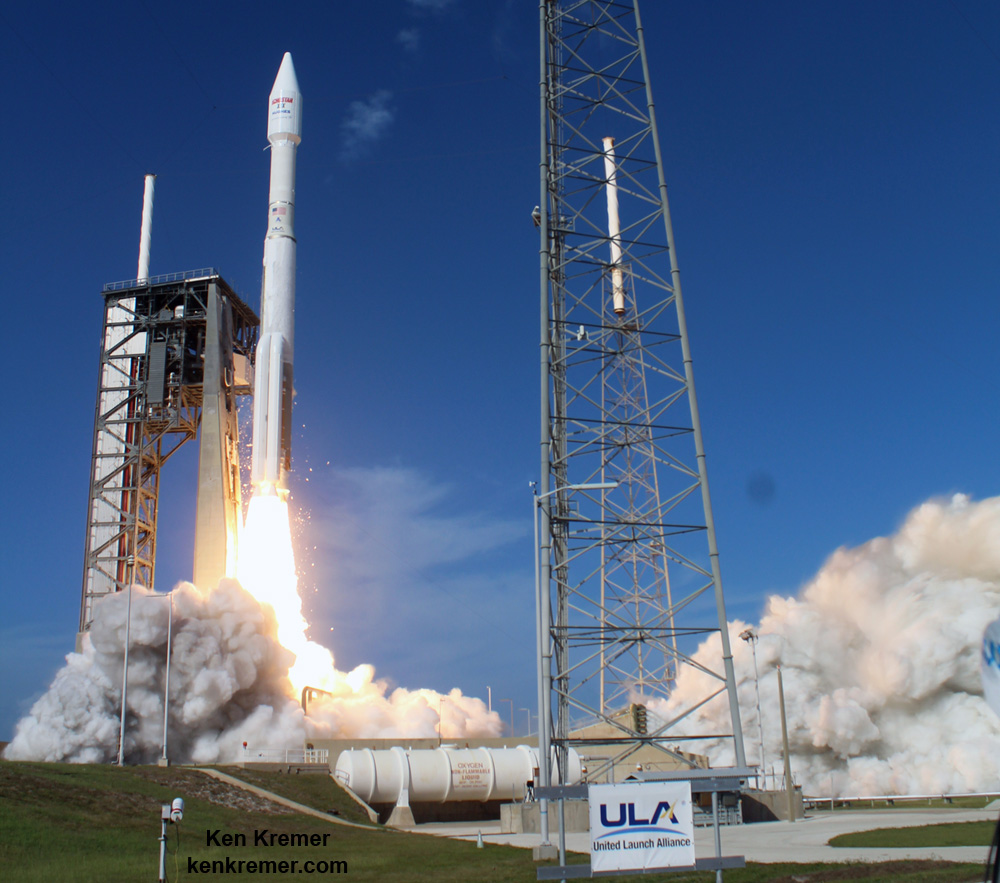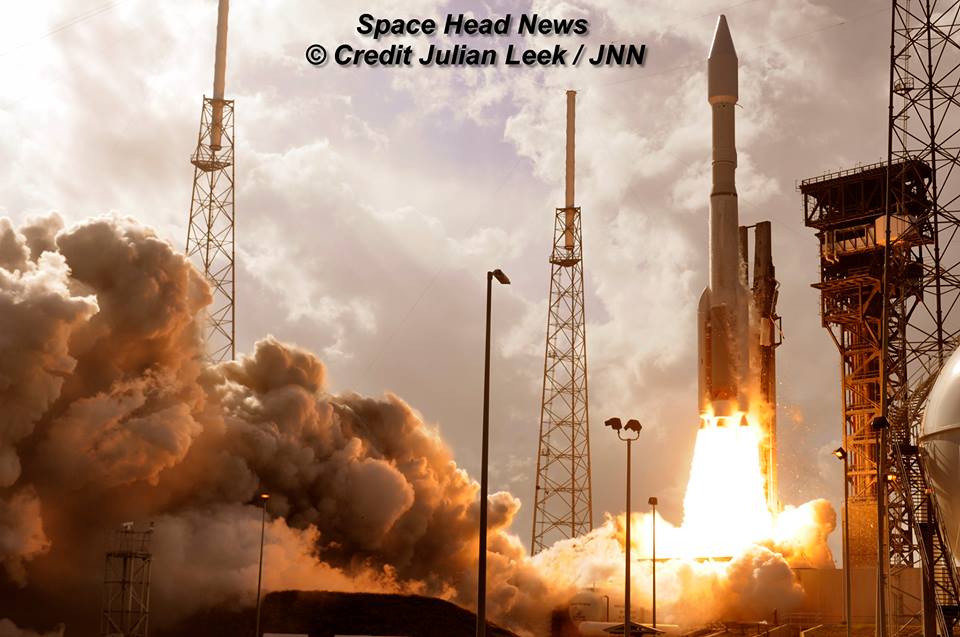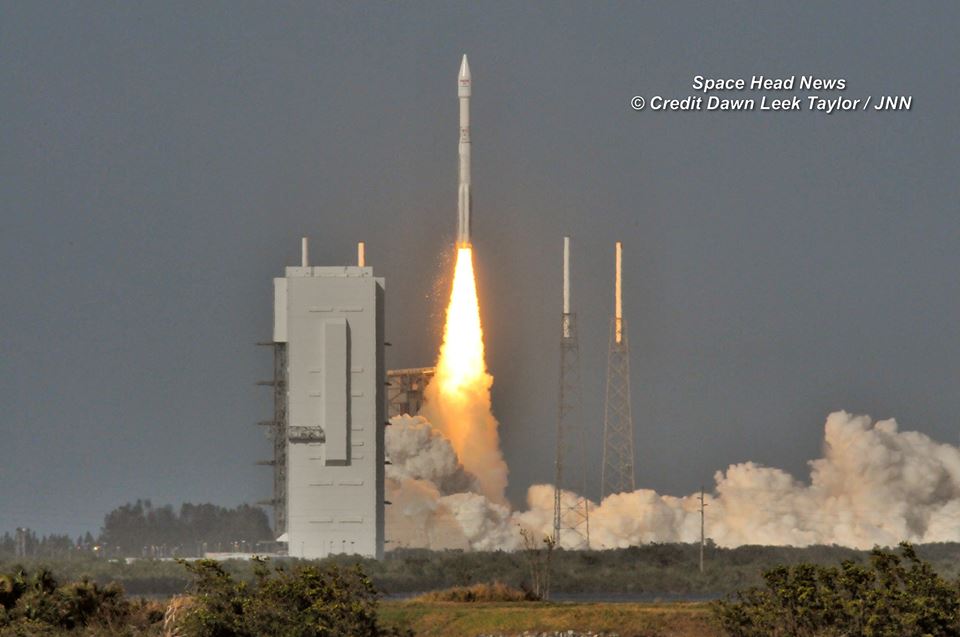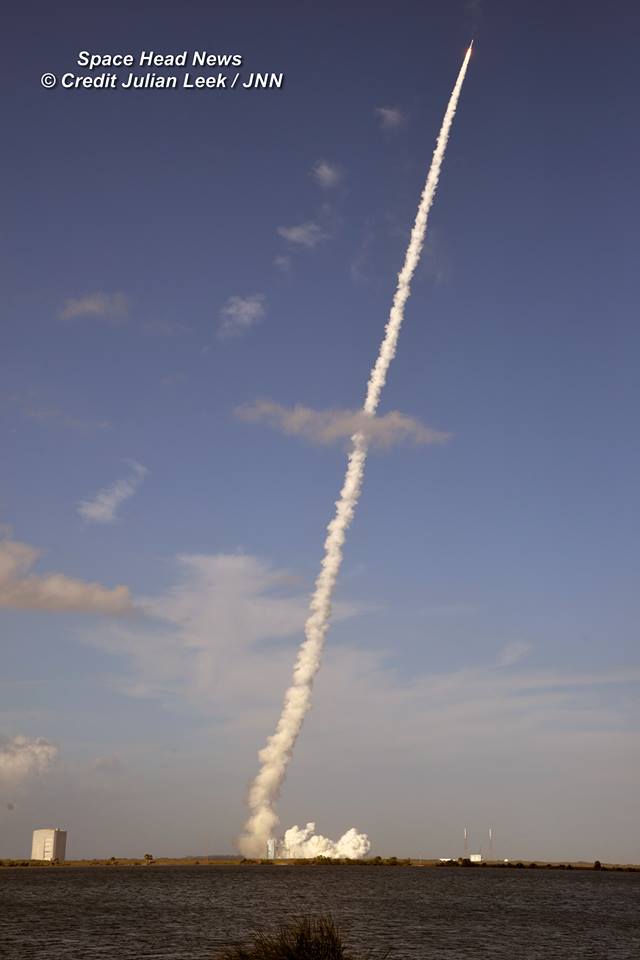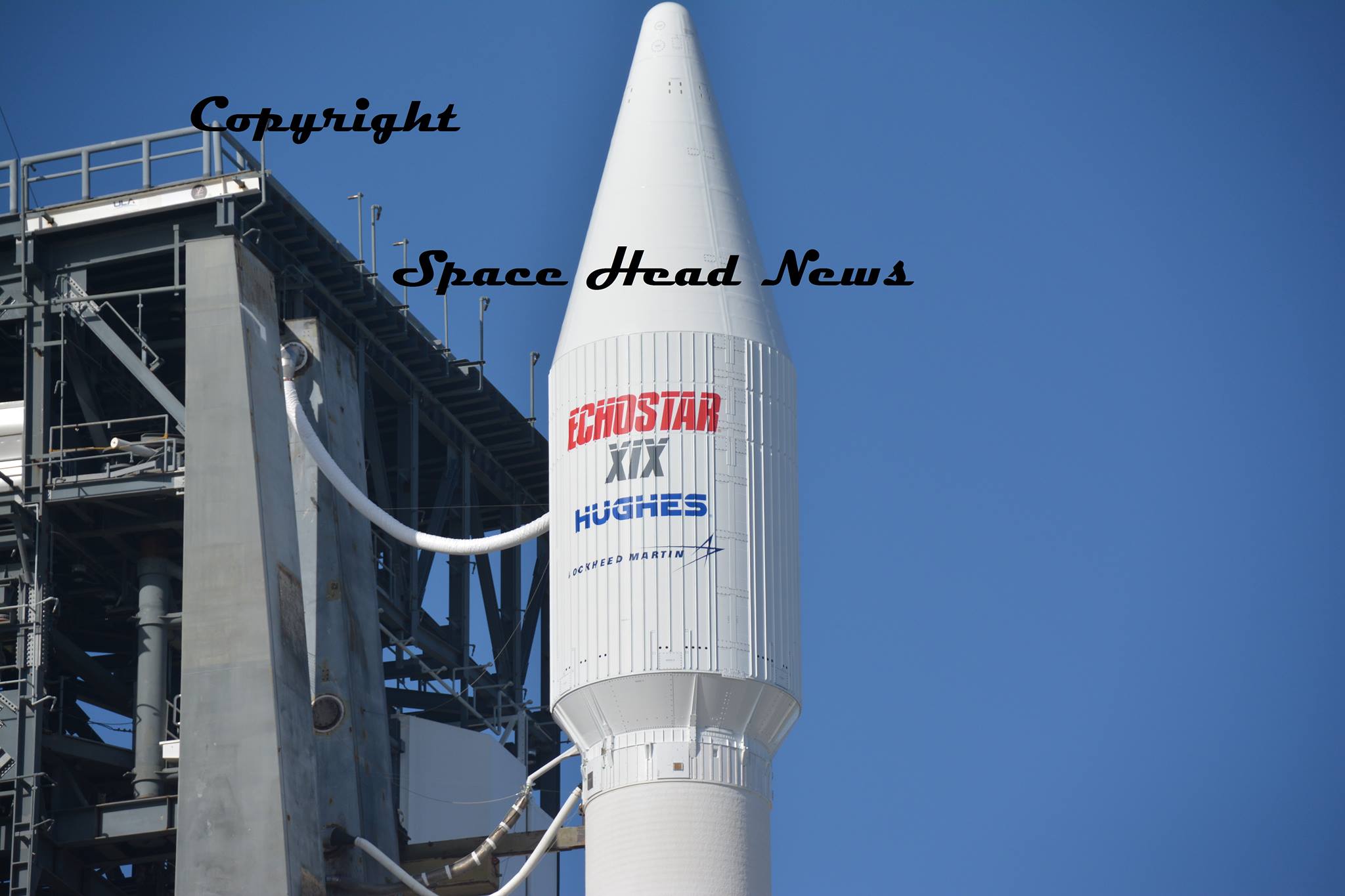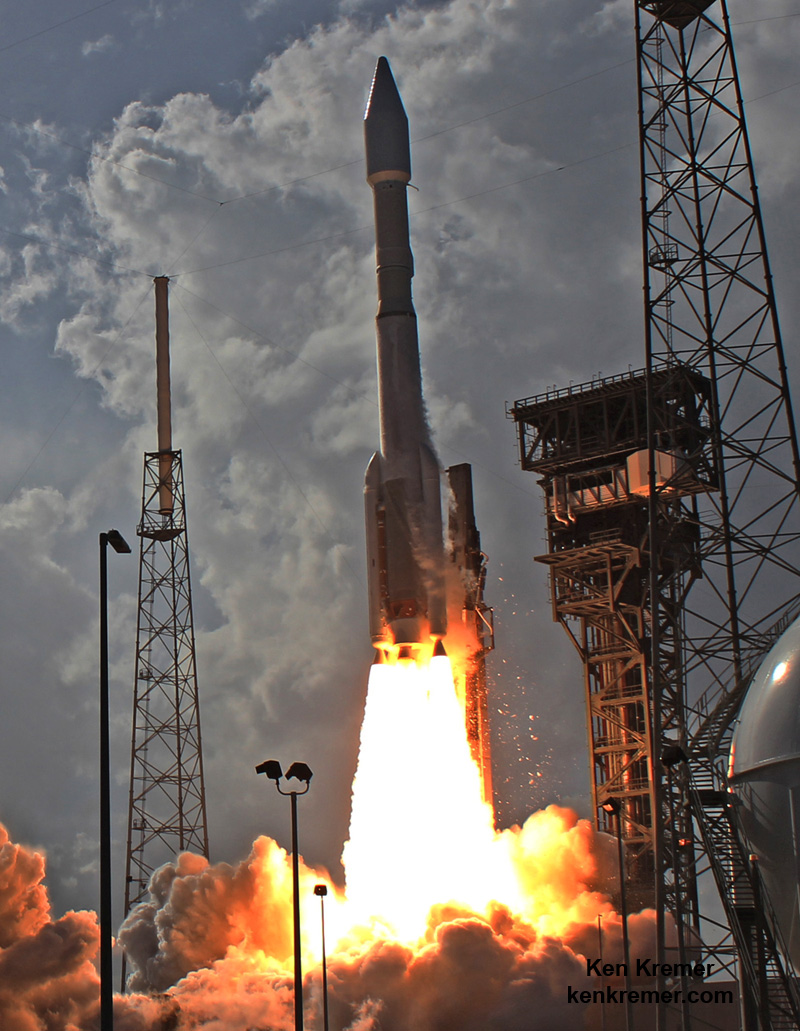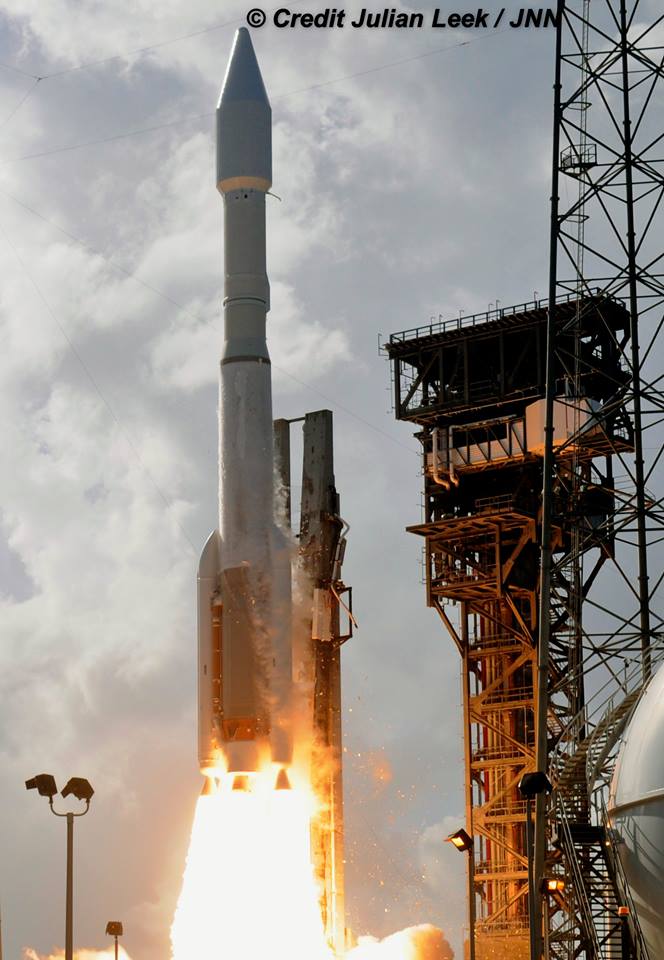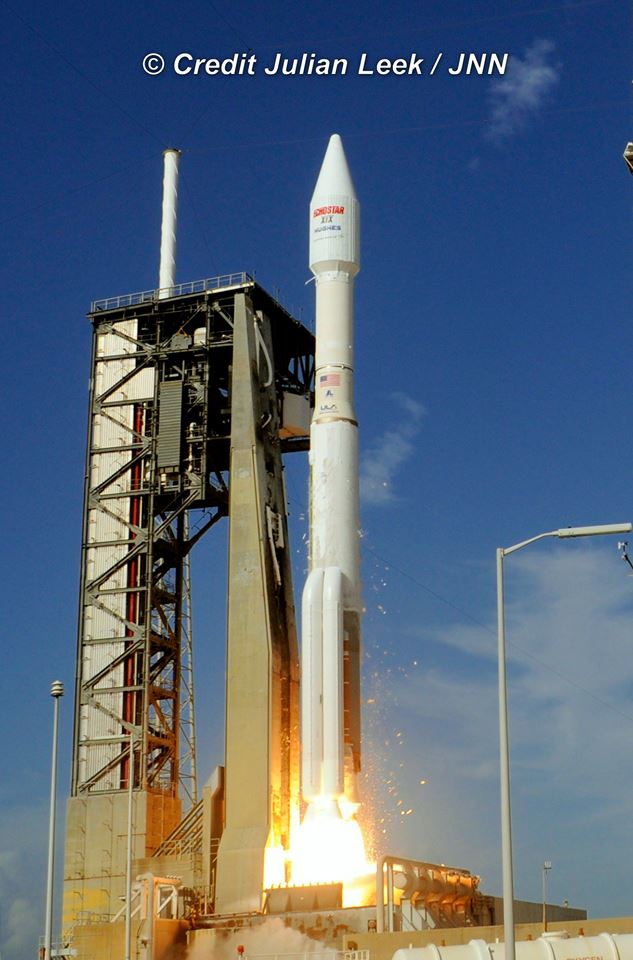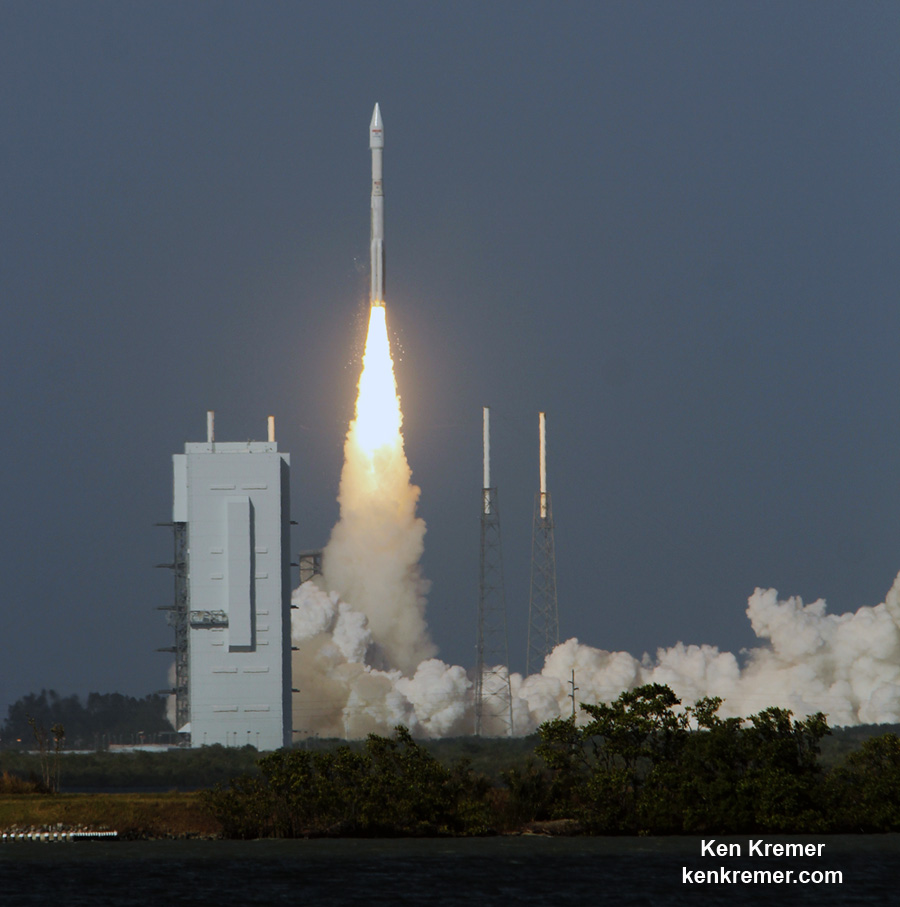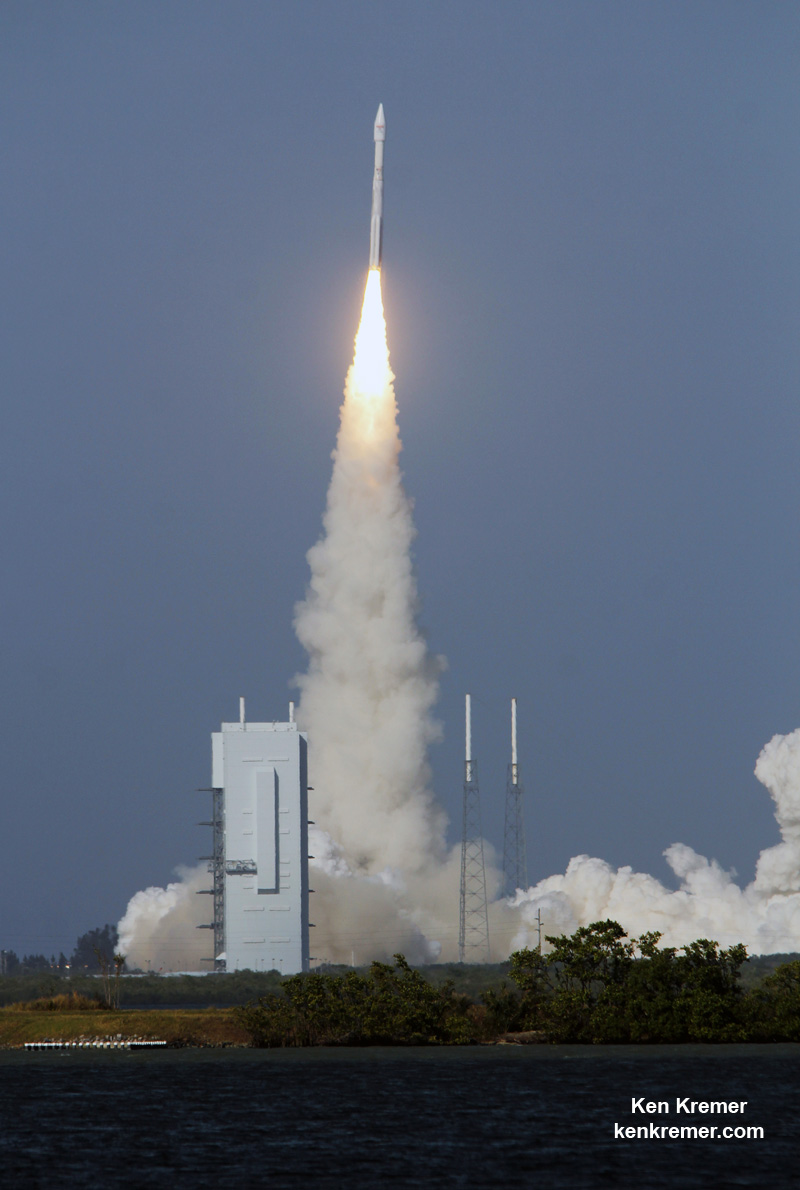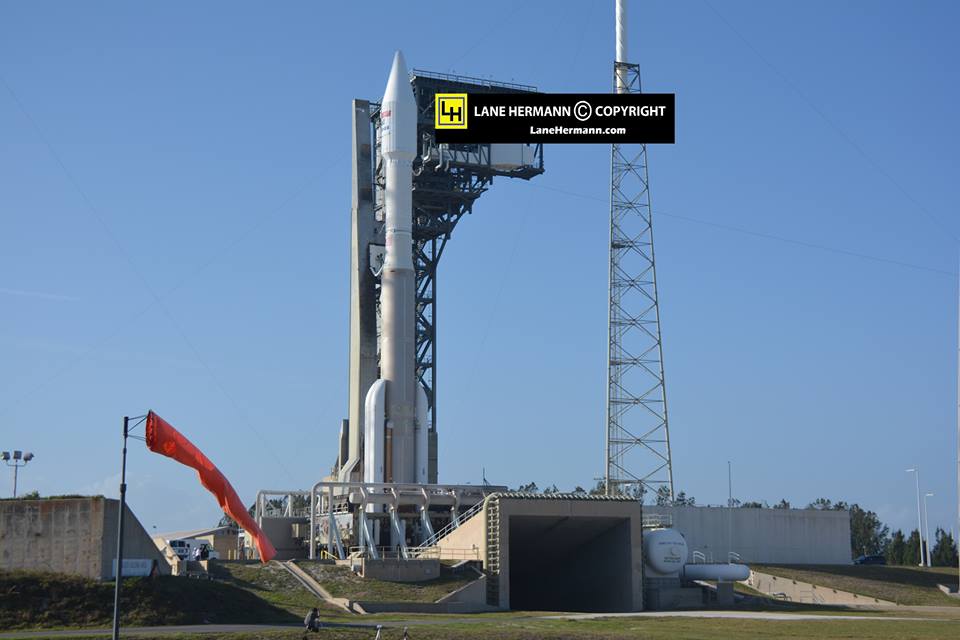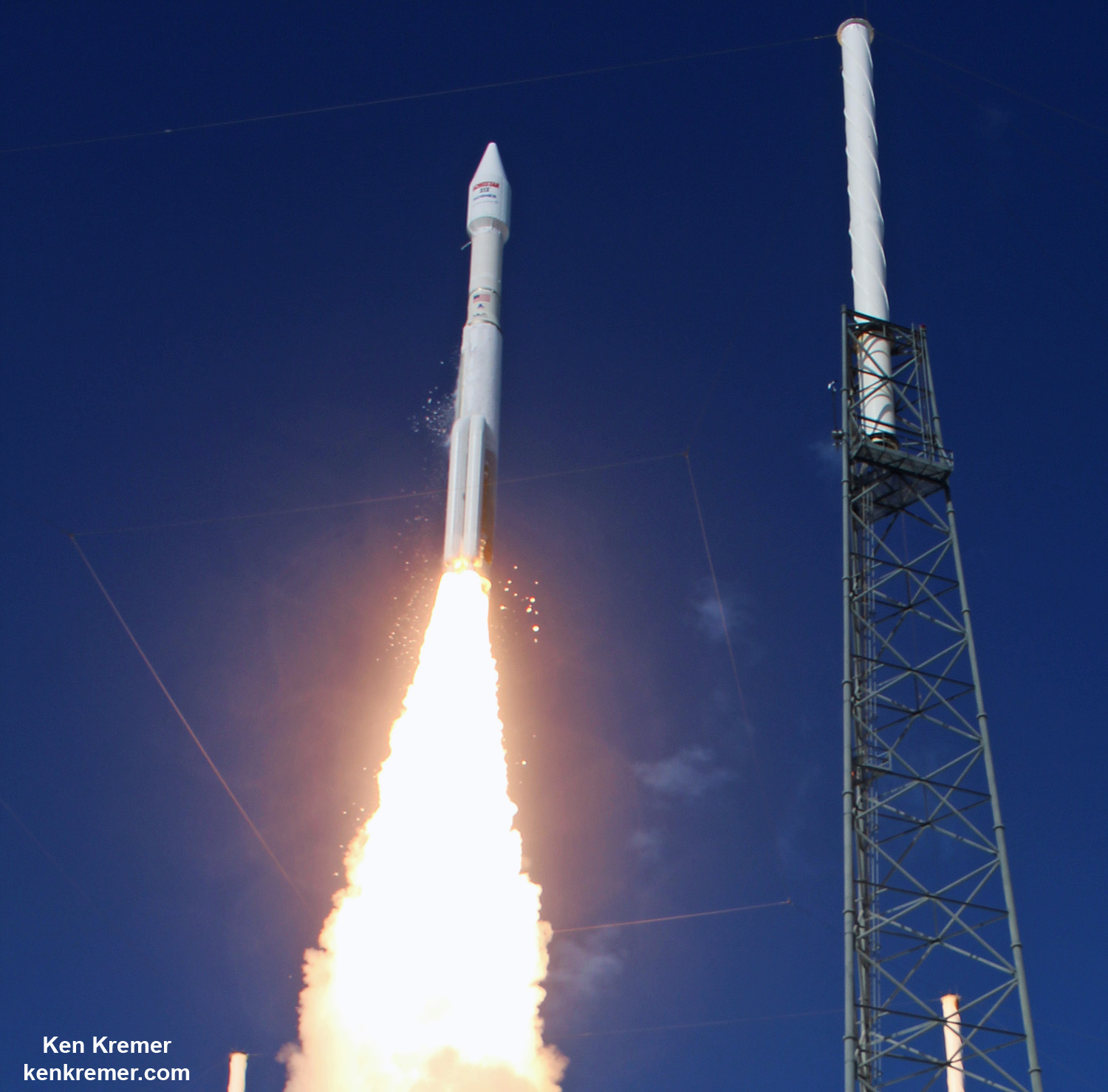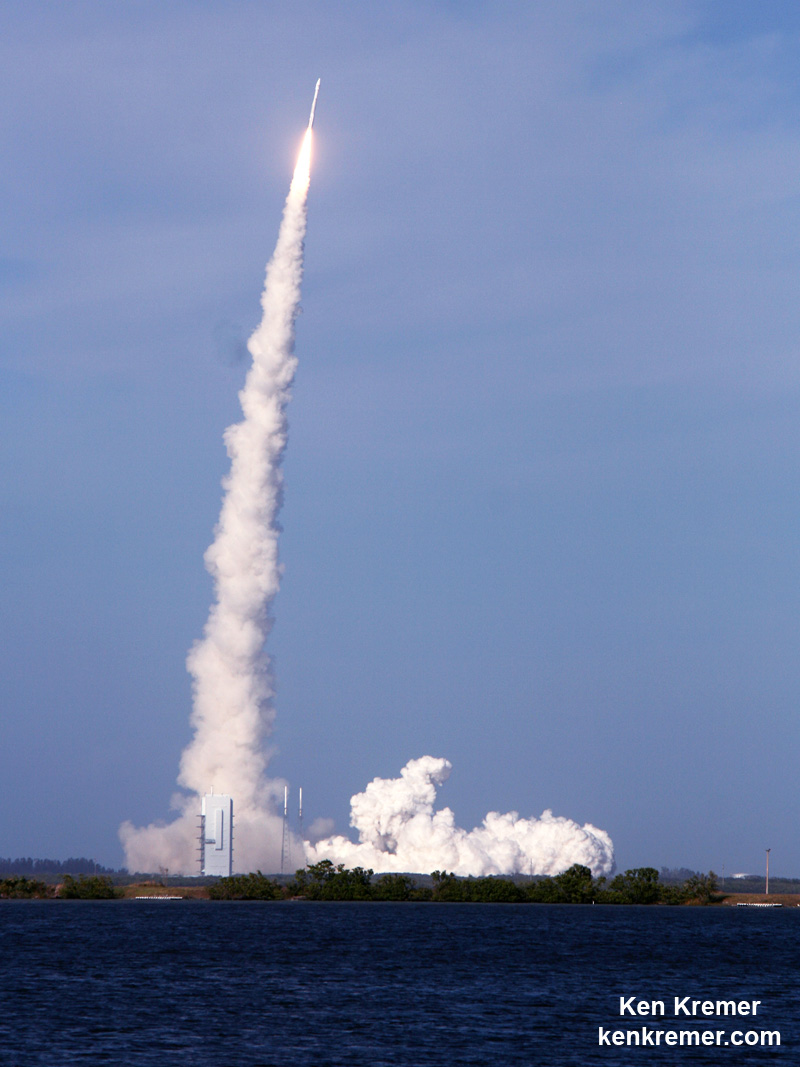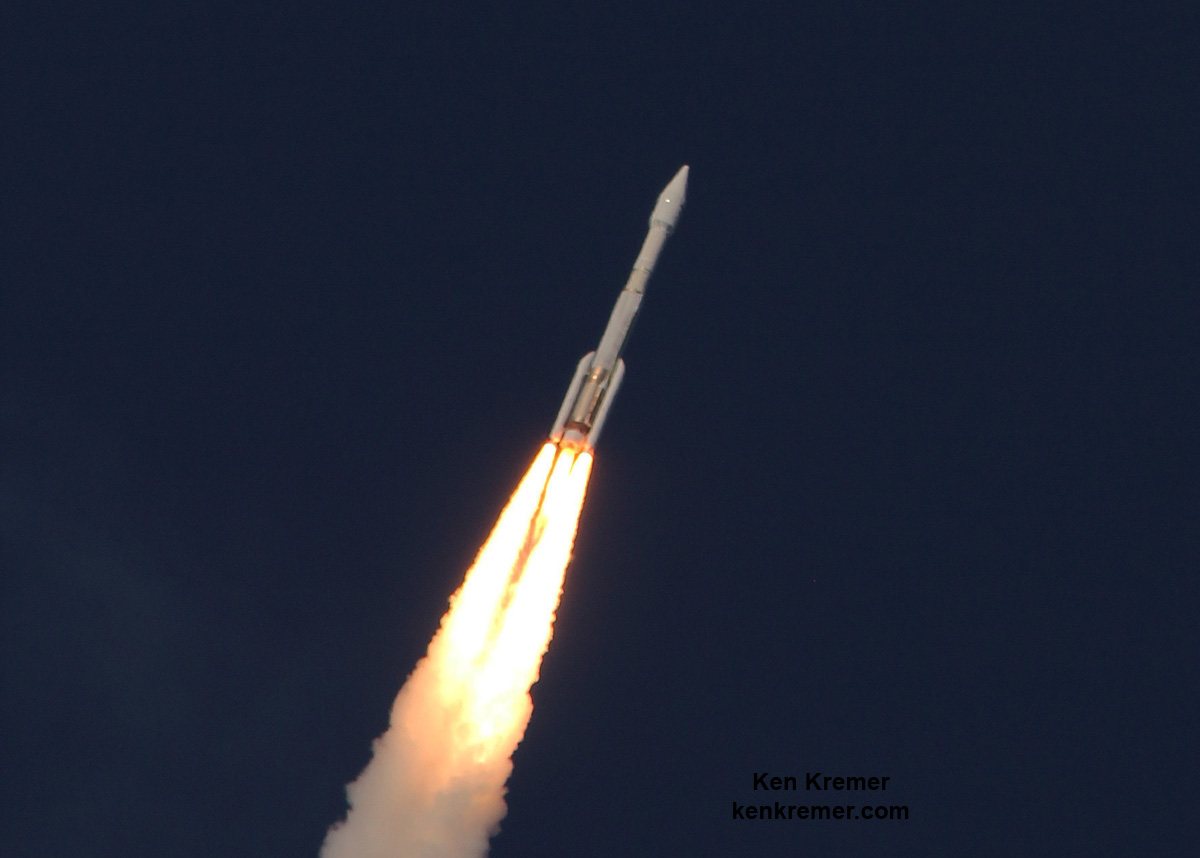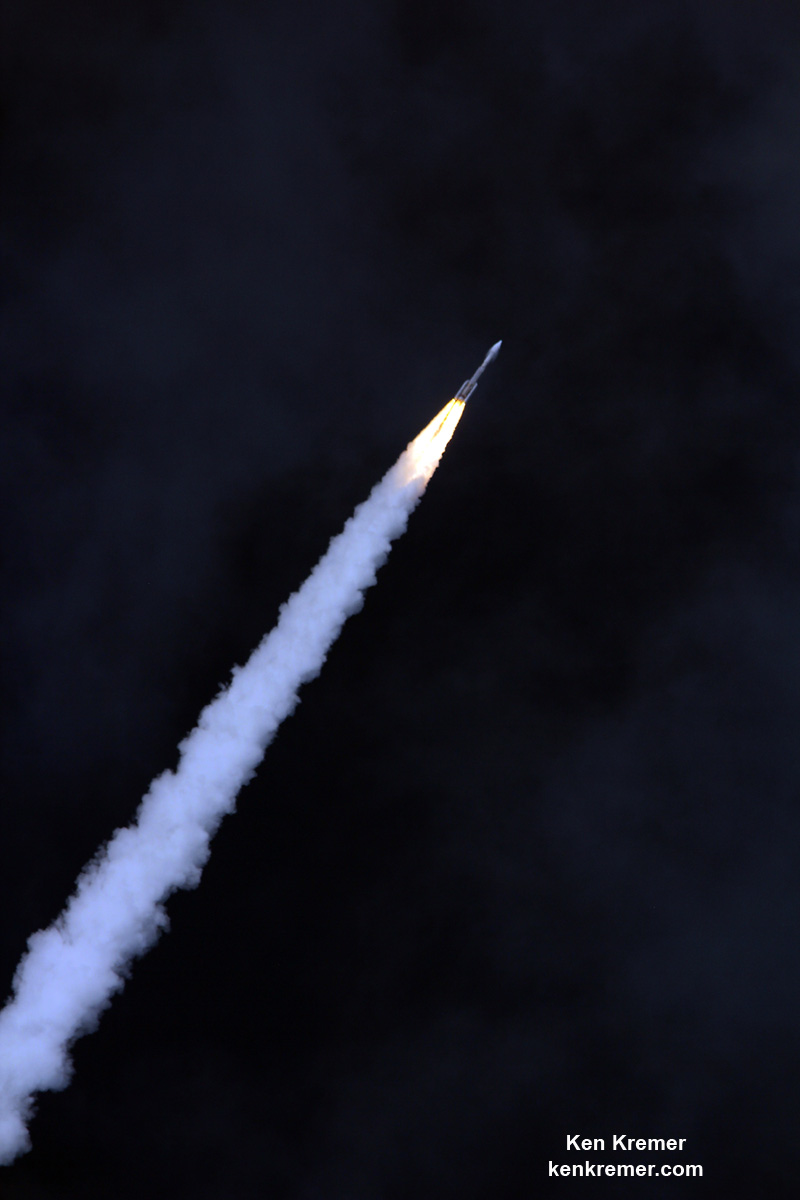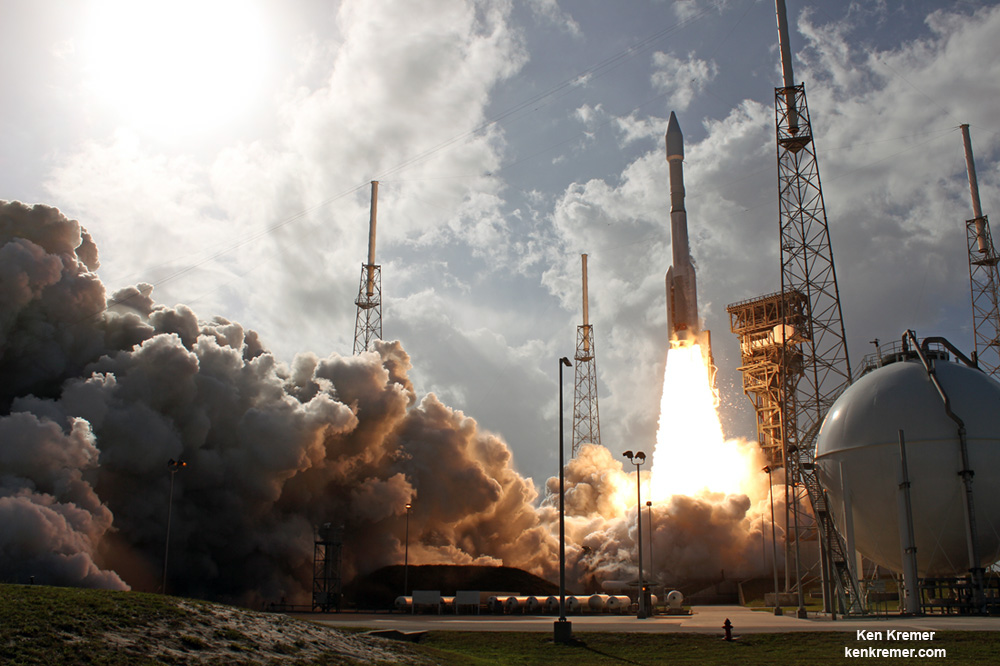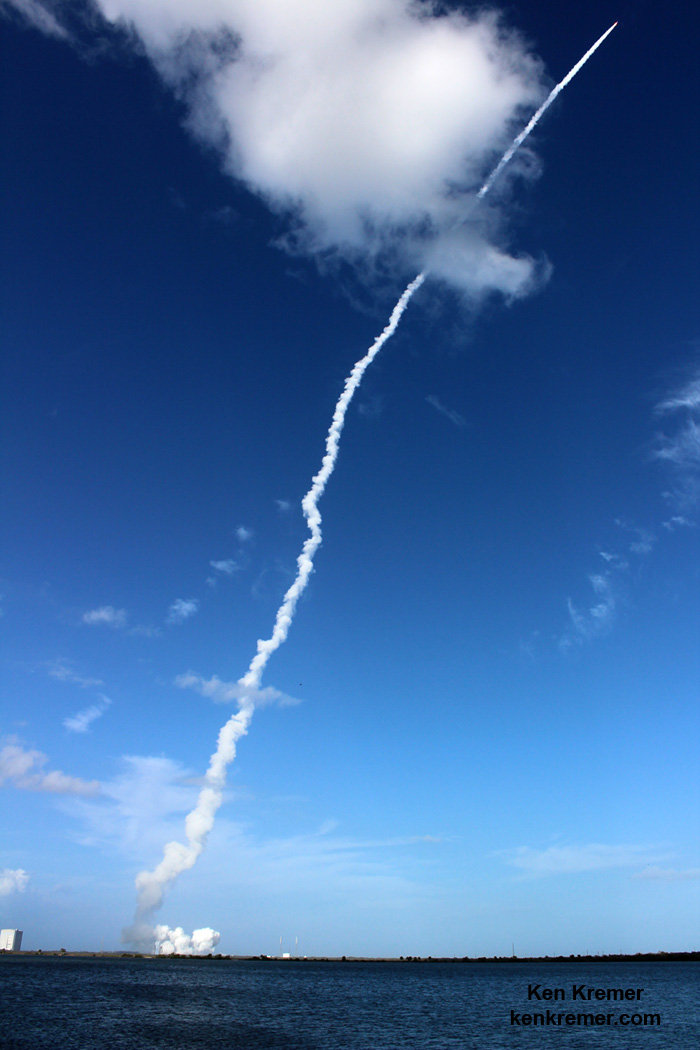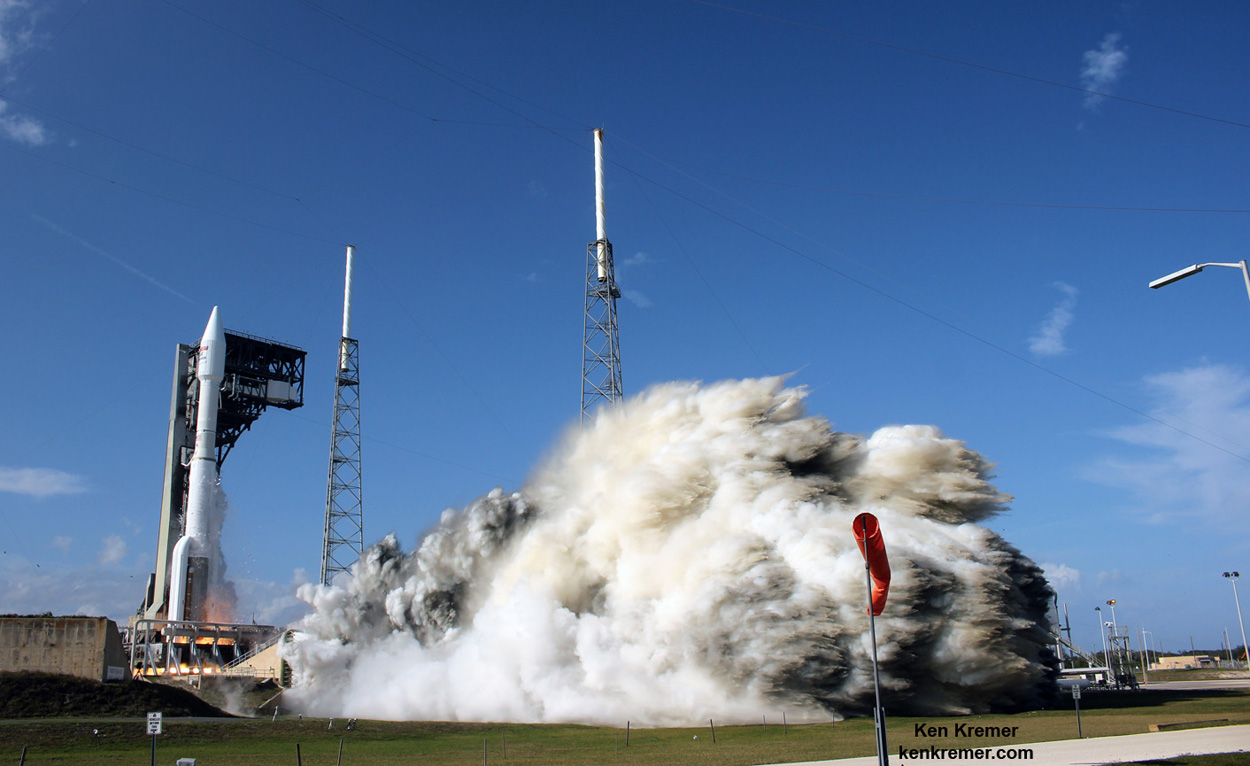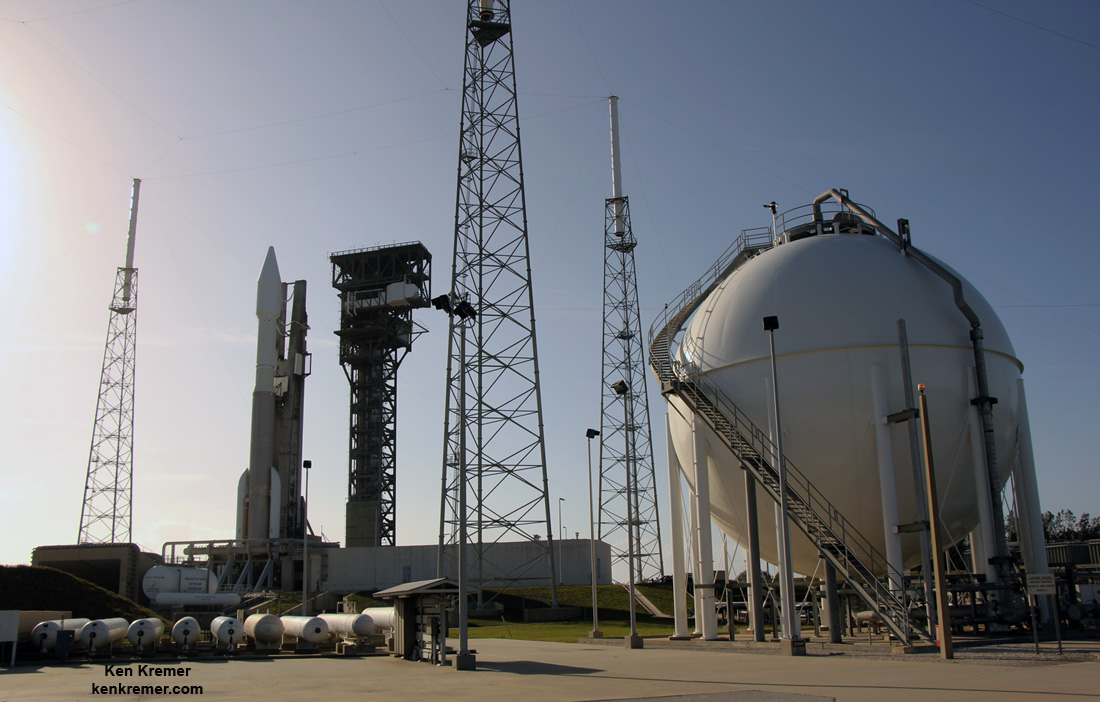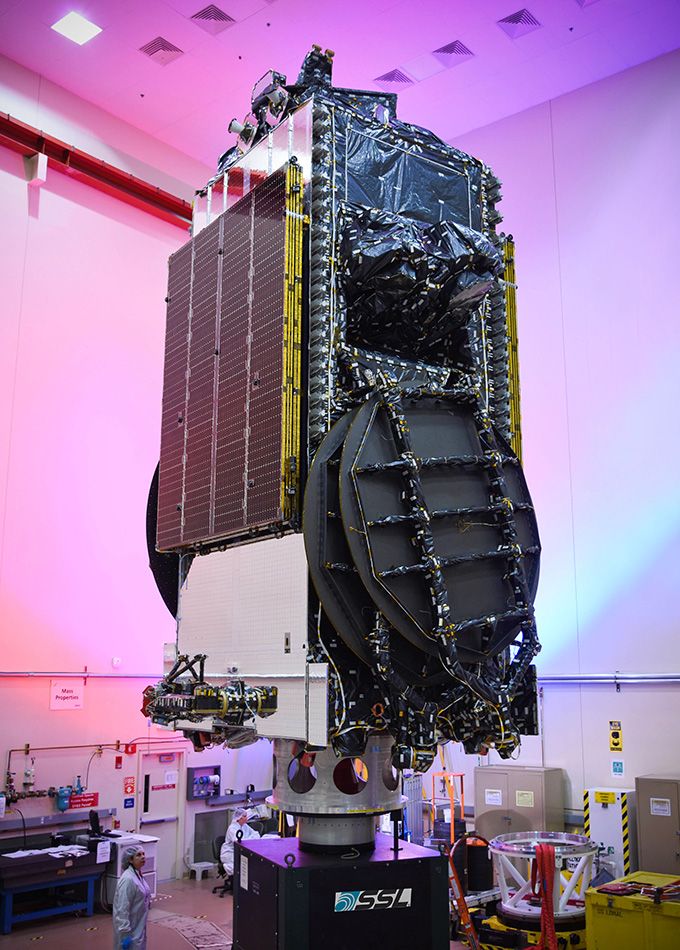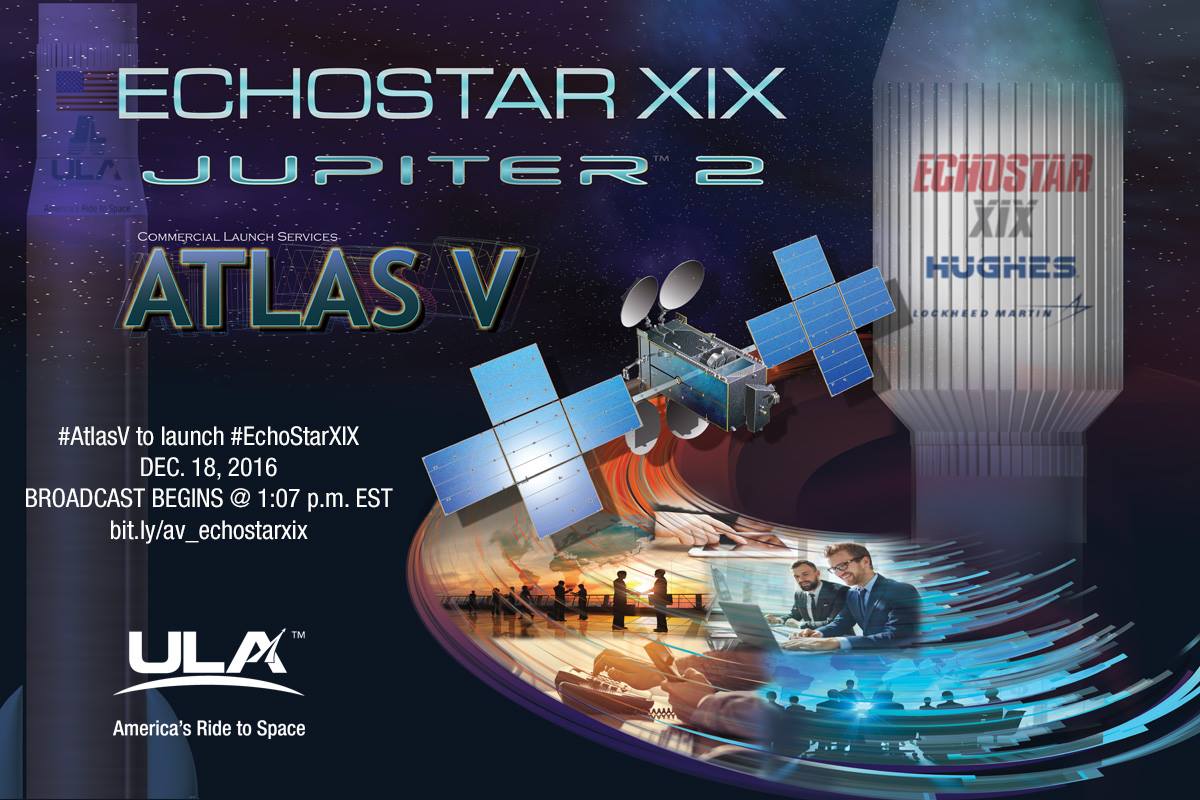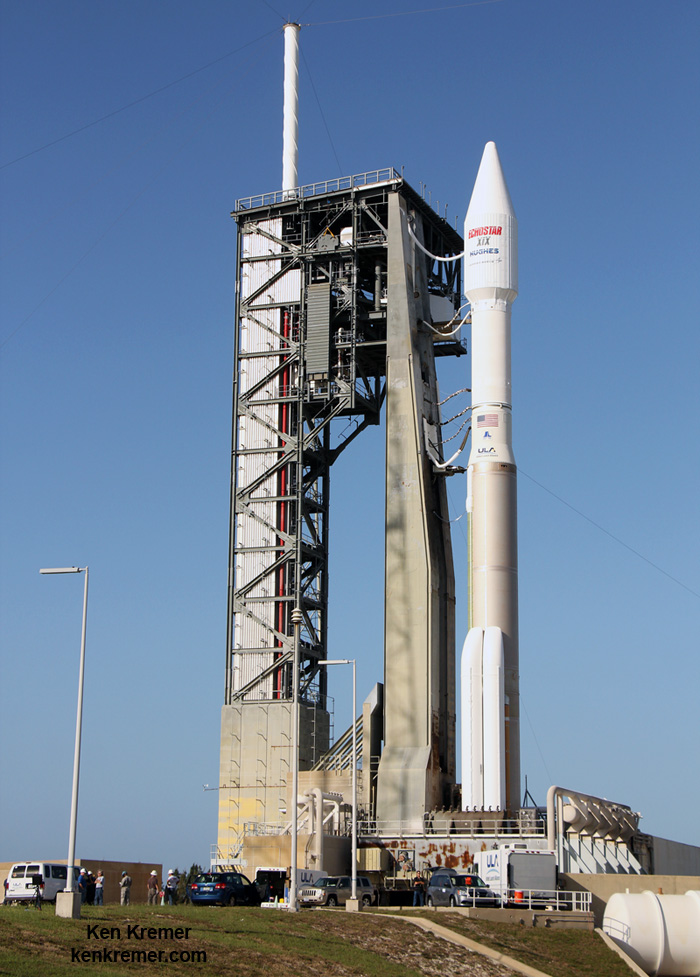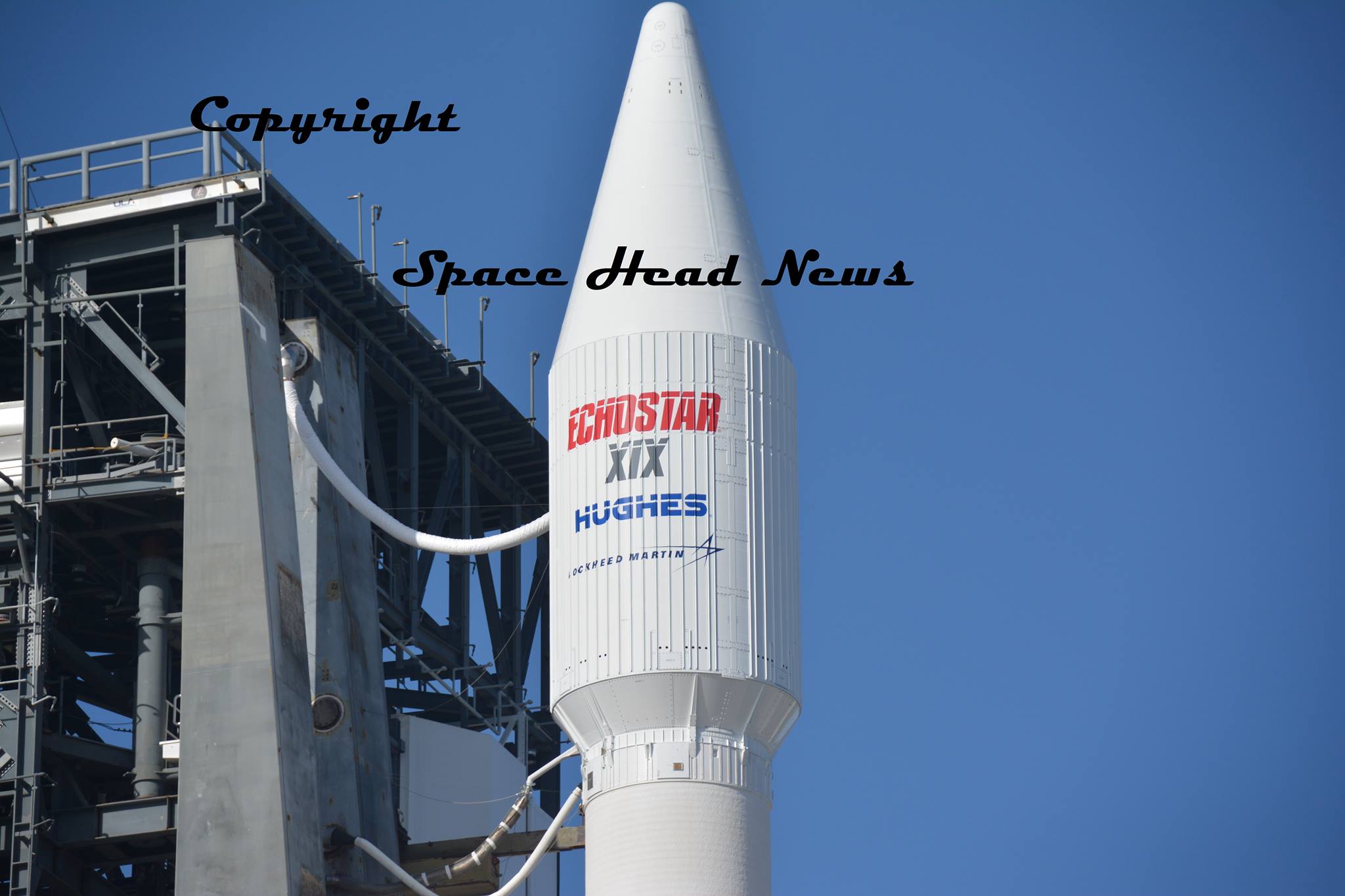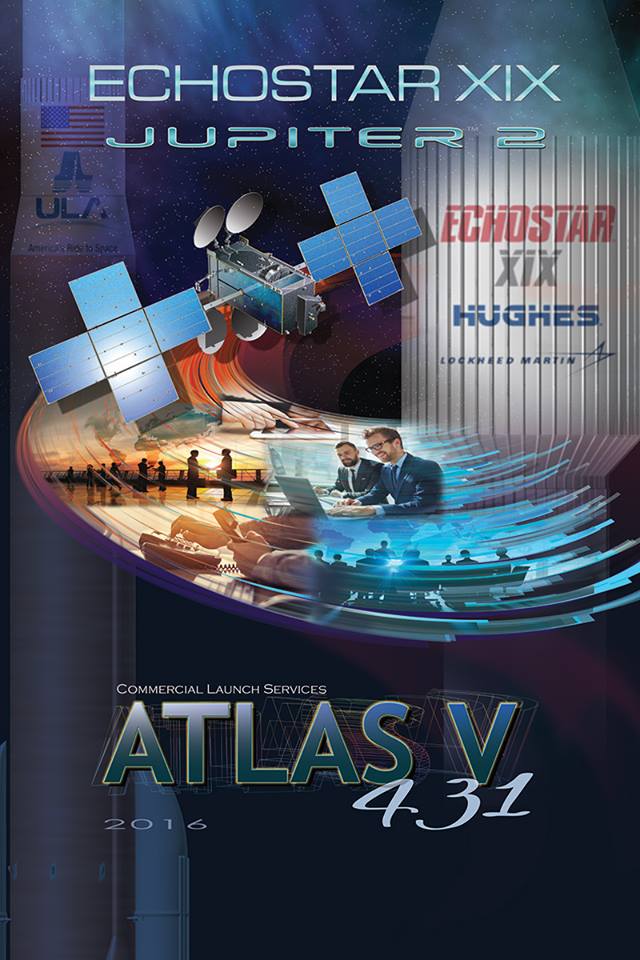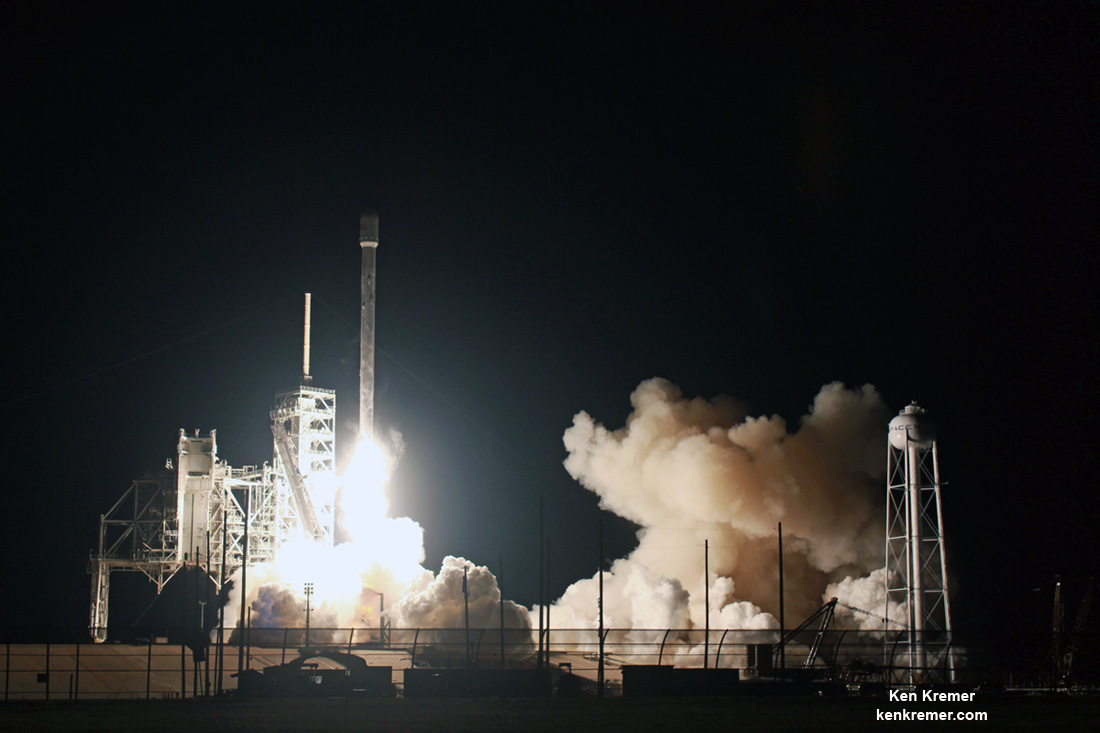
KENNEDY SPACE CENTER, FL – The opening volley of March Launch Madness started brilliantly as showcased by stunning imagery of the inaugural nighttime launch of a SpaceX Falcon 9 off historic pad 39A under moonlit skies along the Florida Space Coast on Thursday, March 15.
The 229 foot tall Falcon 9 rocket thundered to life at 2:00 a.m. EDT Thursday, March 16 on a commercial liftoff from Launch Complex 39A on NASA’s Kennedy Space Center and successfully delivered the high capacity EchoStar XXIII TV broadcast satellite to geosynchronous orbit for Brazil.
Check out the expanding spectacular gallery of launch photos and videos gathered from my space journalist colleagues, myself and spectators ringing the space coast.
Besides being the first night launch of a Falcon 9 from pad 39A, the mission also goes down as the first fully commercial launch from pad 39A.
Overall the EchoStar XXIII launch counts as only the second Falcon 9 ever to blast off from pad 39A.
The inaugural Falcon 9 blastoff successfully took place last month on Feb. 19 on a contracted cargo resupply mission for NASA that delivered over 2.7 tons of science experiments, crew supplies and research gear to the International Space Station (ISS) on the SpaceX CRS-10 Dragon spaceship – as I reported here.
SpaceX’s billionaire CEO Elon Musk leased historic pad 39A from NASA back in April 2014 for launches of the firms Falcon 9 and Falcon Heavy carrying both robotic vehicles as well as humans on missions to low Earth orbit, the Moon and ultimately the Red Planet.
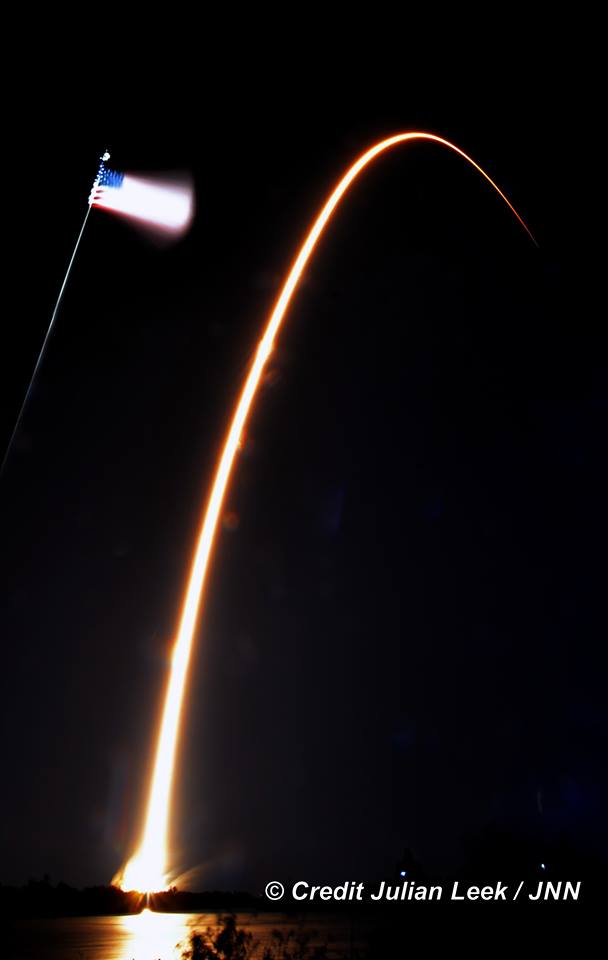
Watch this video compilation from Jeff Seibert:
Video Caption: Echostar-23 launch on a Falcon 9 rocket. The launch of the Echostar-23 satellite is the first commercial launch to take place from historic Pad 39A. Credit: Jeff Seibert
After a short delay due to wind issues, the Falcon 9’s nine Merlin 1D first stage engines ignited at 2:00 a.m. EDT March 16, generating 1.7 million pounds of liftoff thrust to propel the commercial EchoStar 23 telecommunications satellite off pad 39A and on its way to a Geostationary Transfer Orbit (GTO) for EchoStar Corporation.
The satellite was deployed approximately 34 minutes after launch.
If all goes well, March features a triple header of launches with launch competitor and arch rival United Launch Alliance (ULA) planning a duo of nighttime blastoffs from their Delta and Atlas rocket families.
With Falcon away, the launch dates have been rescheduled for Saturday, March 18 and Friday, March 24 respectively.
Indeed the potential for a grand slam of launches also exists with another Falcon 9 blastoff at the very end of this month – if all goes well. But first we have to get through the Delta and Atlas launches and deal with finicky Florida weather.
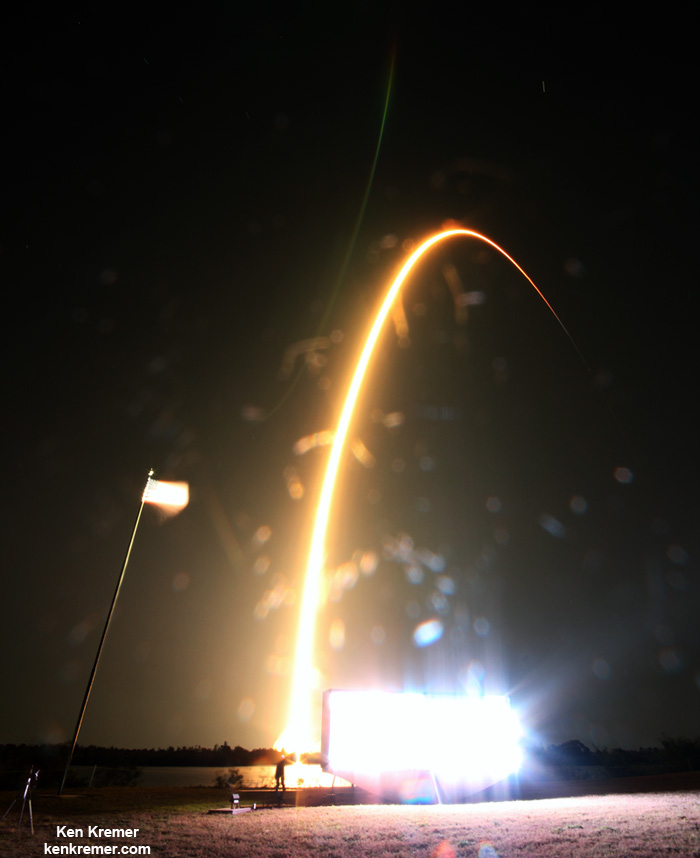
SpaceX announced that this was the last launch of an expendable Falcon 9.
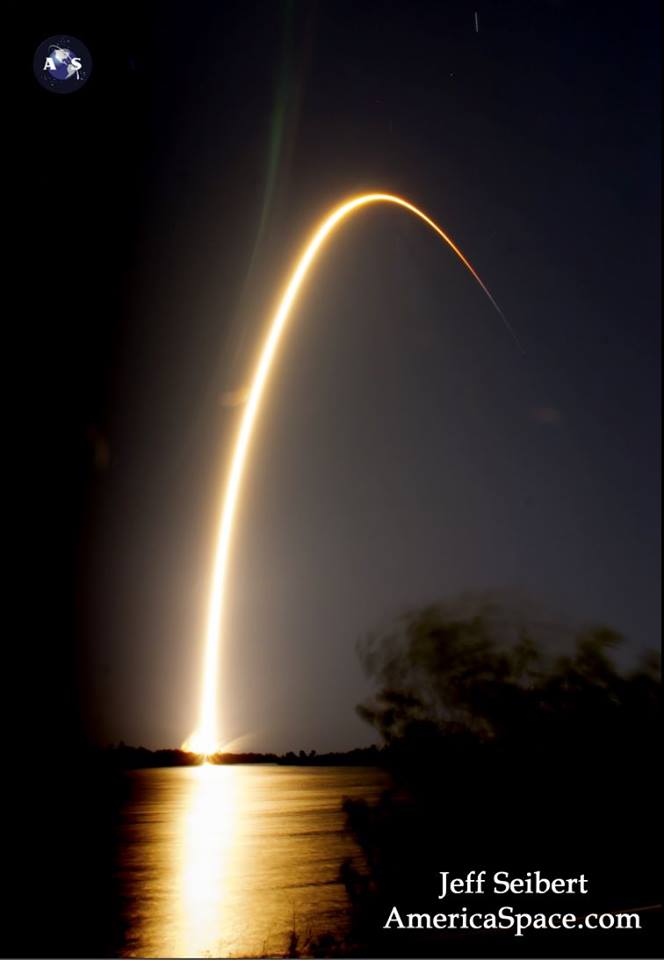
Stay tuned here for Ken’s continuing Earth and Planetary science and human spaceflight news.
